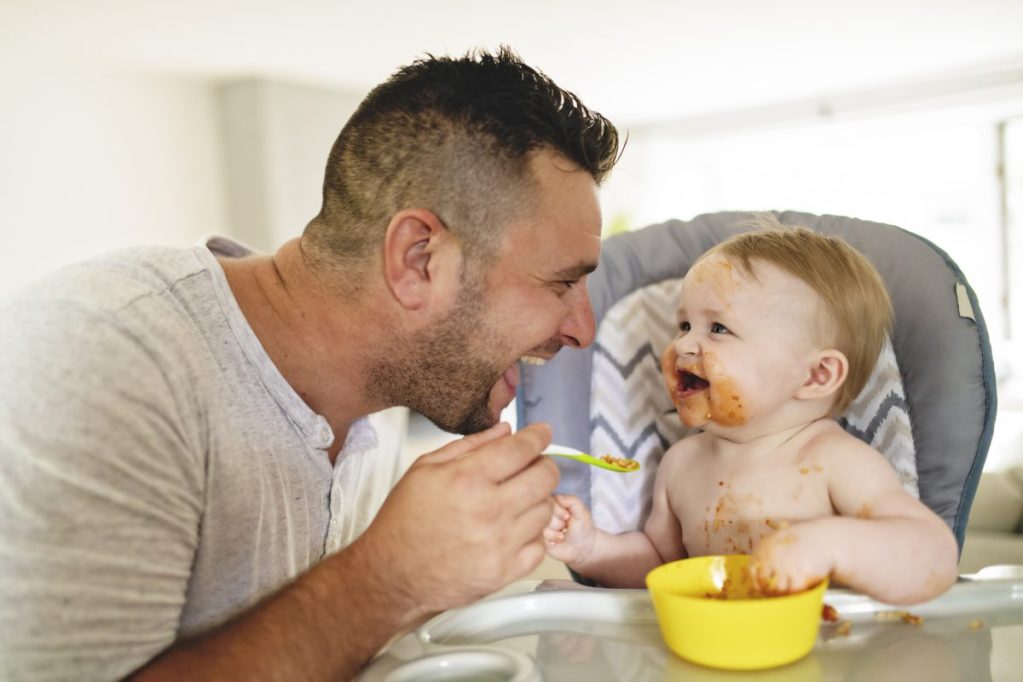
The most common food allergies in children are peanuts, eggs, and dairy. Other childhood food allergies include wheat, soy, and tree nuts. According to John Hopkins, around five percent of kids under the age of five have food allergies. Food allergies to peanuts, tree nuts, fish, and shellfish tend to trigger more severe reactions.
While some kiddos may eventually outgrow a food allergy, allergies to peanuts, tree nuts, fish, and shellfish tend to be lifelong. Symptoms of food allergies can vary from mild to life-threatening. When you begin to introduce your baby to solids, it’s important to only do one food at a time. Doing so makes it easier to determine which food may be a potential allergy. If you’re already concerned your child has food allergies, let’s take a look at the signs and symptoms.
What causes food allergies in kids

Understanding the factors that trigger food allergies often helps with familiarizing yourself with the signs and symptoms. Basically, the body responds to the food by sending out antibodies to defend itself. In turn, this reaction causes histamines to be released which then triggers a variety of symptoms from a minor rash to stomach issues like vomiting, cramps, and diarrhea.
In short, the immune system mistakes the food for an invasive enemy and unleashes its army of antibodies, chemicals, and histamines to attack it. Some of the most common offenders include:
- Milk
- Peanuts and/or tree nuts
- Soy
- Eggs
- Wheat
- Fish and/or shellfish
- Sesame seeds
Does my child have a food allergy?

Gaining an awareness of the symptoms of food allergies and consulting with your pediatrician with any questions or concerns can put you ahead of the game when it comes to detecting any food-related issues. Food allergy symptoms in kids can often be:
- Redness of the skin
- Hives
- Eczema
- Sneezing
- Itchiness in the mouth, tongue, lips, or throat
- Dry cough
- Runny nose
- Stomach pain
- Nausea
- Diarrhea
- Vomiting
- Dizziness
- Hoarseness
If these symptoms occur often, and you suspect that each incident correlates directly with a certain food, then you should contact your pediatrician to see if your child needs to be tested for a possible food allergy.
More severe symptoms to watch for
Some symptoms of food allergies in kids present as more severe cases where you need to call 911 or go to the emergency room immediately. These include:
- A feeling of closing or tightening of the throat
- Trouble breathing and shortness of breath
- Swelling of the face, tongue, throat, and lips
- Severe nausea, vomiting, and diarrhea
- Trouble talking
- Feeling lightheaded, disoriented, or dizzy with a drop in blood pressure
- Fast, weak heartbeat
- Seizure
- Moist, cold, or light blue skin
- Loss of consciousness
A combination of breathing issues, swelling, and dizziness could signal anaphylaxis, which is a severe reaction that involves multiple systems in the body. In this situation, you need to call 911 immediately. Another important aspect of allergic reactions to remember is that certain symptoms start off mild and can progress rapidly. So, erring to the side of caution is always best.
Symptoms in babies and toddlers
In babies and younger toddlers, symptoms of an allergic reaction can be similar to those mentioned, but here are a few that differ slightly:
- Blood in the baby’s or toddler’s stool
- Poor growth
- Persistent eczema that doesn’t go away
- Constant colic and fussiness
While these symptoms don’t always translate into an emergency or indicate a food allergy, you should still consult with a doctor and/or allergist for an accurate diagnosis and prompt treatment.
How are food allergies in kids diagnosed and treated?

Luckily, your pediatrician has a head start toward obtaining a diagnosis since the office has your child’s complete health history. Aside from that, you might need to provide a brief food journal or list of foods, snacks, and drinks your child has eaten for a week or more. Additionally, the doctor might refer your child to an allergist and order any of the following tests:
- A blood test or RAST (radioallergosorbent test) to measure the number of IgE antibodies that are released upon exposure to certain possible allergens
- A skin prick test that involves exposing the skin to the allergen but is not used if your child had a severe reaction
- The food challenge test that’s administered only by an allergist by mouth or inhaled, and the child is closely watched for a reaction
One thing to keep in mind is that the food challenge is administered mostly when the allergist thinks that your child has outgrow the allergic reaction and might be able to eat the food now. Likewise, the only drawback to the blood and skin prick tests is that they won’t tell how severe the reaction will be. Running any or a combination of these tests will either diagnose the issue or rule out the possibility of a food allergy.
What is the difference between a food allergy and food intolerance?

Since food allergies and food intolerances sometimes cause similar symptoms, it’s easy to confuse the two. Food allergies are allergic reactions that target the body’s immune system. A true food allergy can be triggered by eating just small amounts or even by touch. Food intolerances don’t illicit an allergic reaction like a rash and only impact the digestive system. People with food intolerances may be able to tolerate certain portions of a bothersome food and don’t react from touch.
An example of a food intolerance is those with lactose issues. If a person is lactose intolerant, they can still enjoy dairy by drinking lactose-free milk or using lactose pills such as Lactaid before having pizza. A food intolerance can be caused by the lack of a digestive enzyme. This is the case with lactose intolerance. Food intolerance can be a component of irritable bowel syndrome. Food additives can sometimes play a role in a food intolerance.
Treatments for food allergies

Treatment for food allergies comes in different forms from dietary changes to treatments for the symptoms themselves. For the more severe cases of food allergies where anaphylaxis might occur, doctors might prescribe epinephrine autoinjectors, more commonly known as “epi-pens.” In this situation, you would always need to carry two pens with you. If your child is already in daycare or school, then the nurse would need to have two on hand as well.
Identifying food allergies is important, especially in children at risk for severe reactions. While many kids outgrow their food allergies, others do not. Symptoms of food allergies range from mild to life-threatening. If you suspect your child may have a food allergy, start keeping track of the symptoms you notice as well as the foods being eaten. Then, head to your pediatrician. Food allergy symptoms may start out mild but develop into something more serious with prolonged exposure. Once you have a handle on the foods your kiddo is allergic to, you learn how to manage with the help of your pediatrician and allergist.



